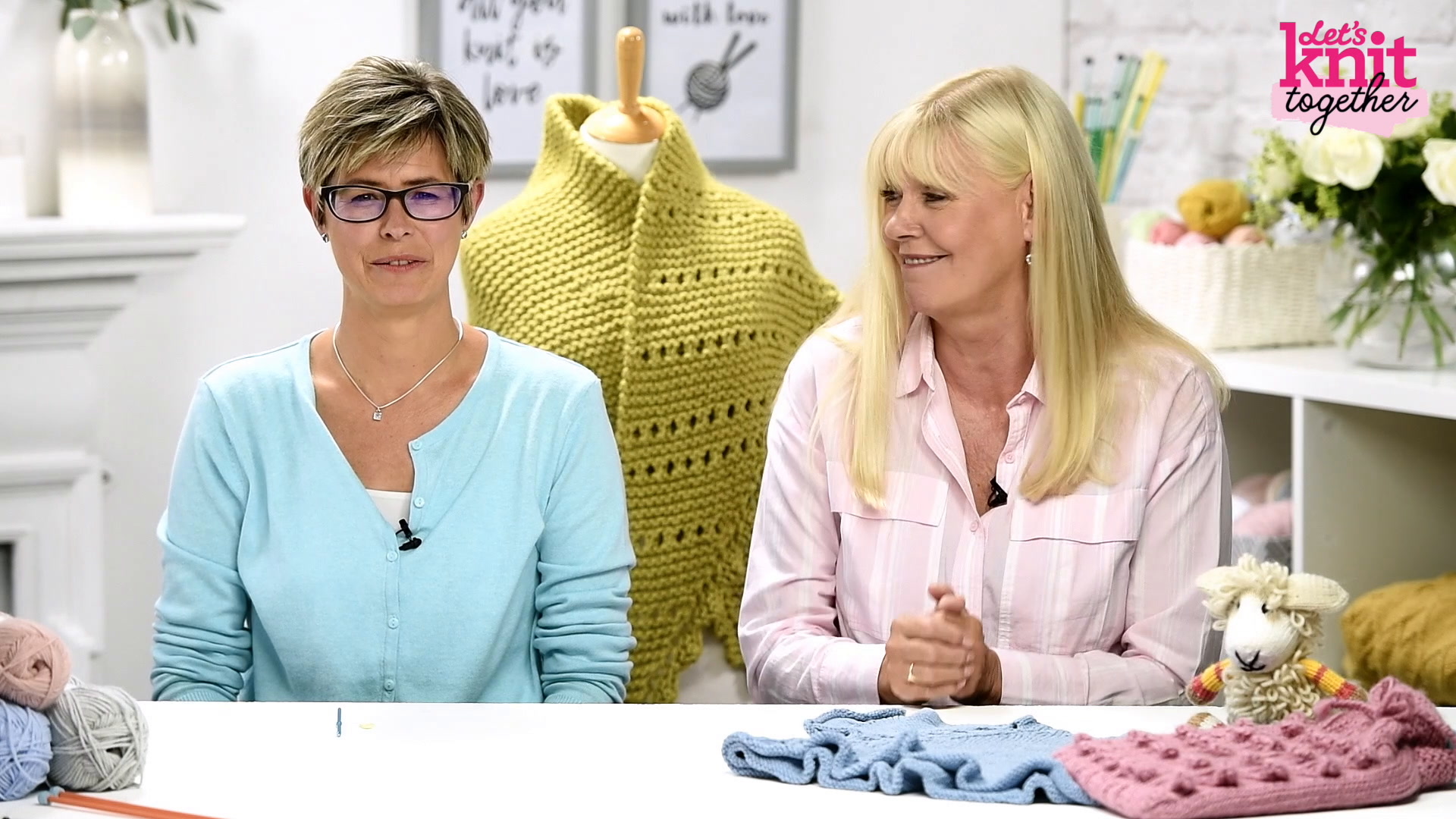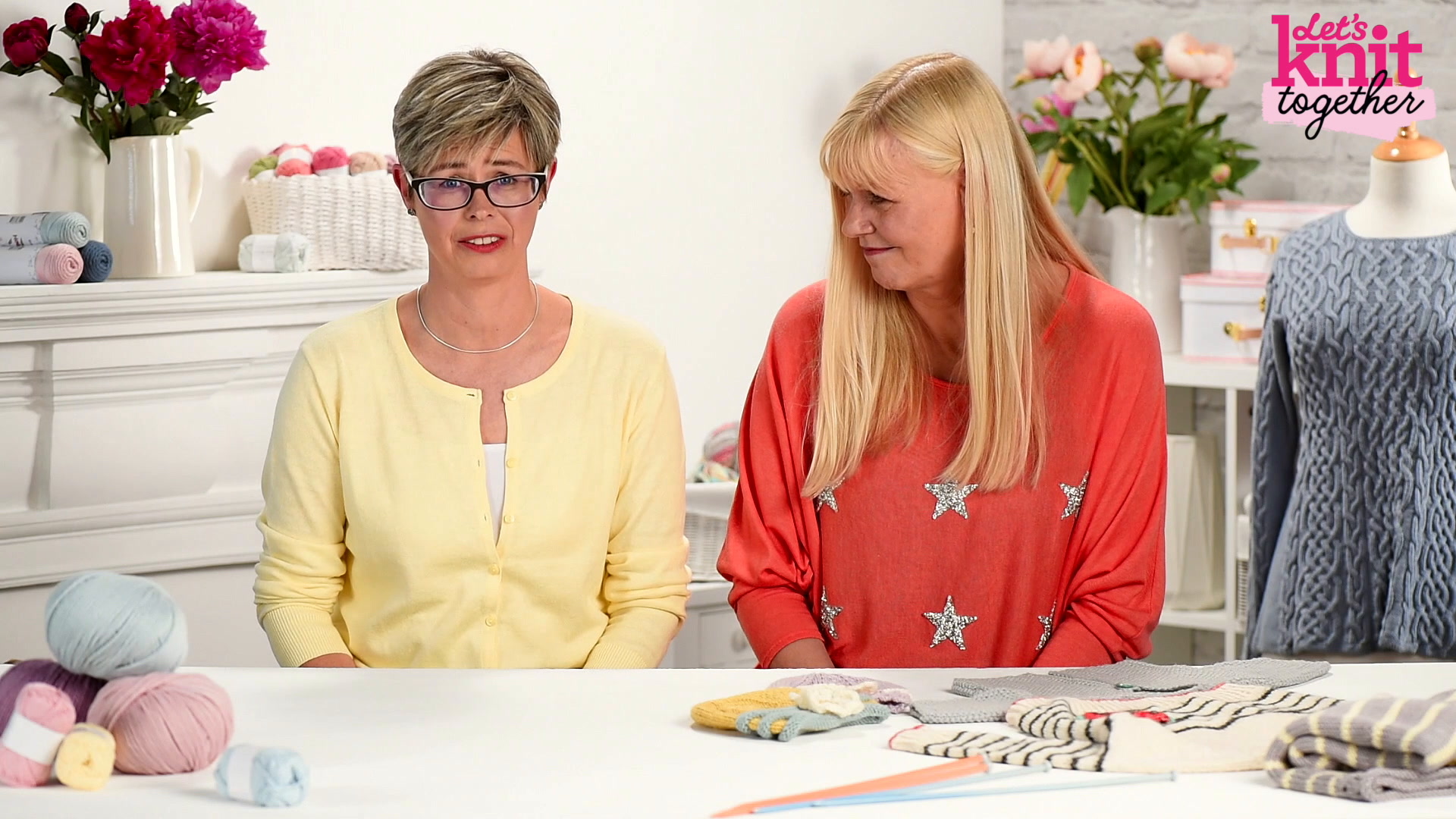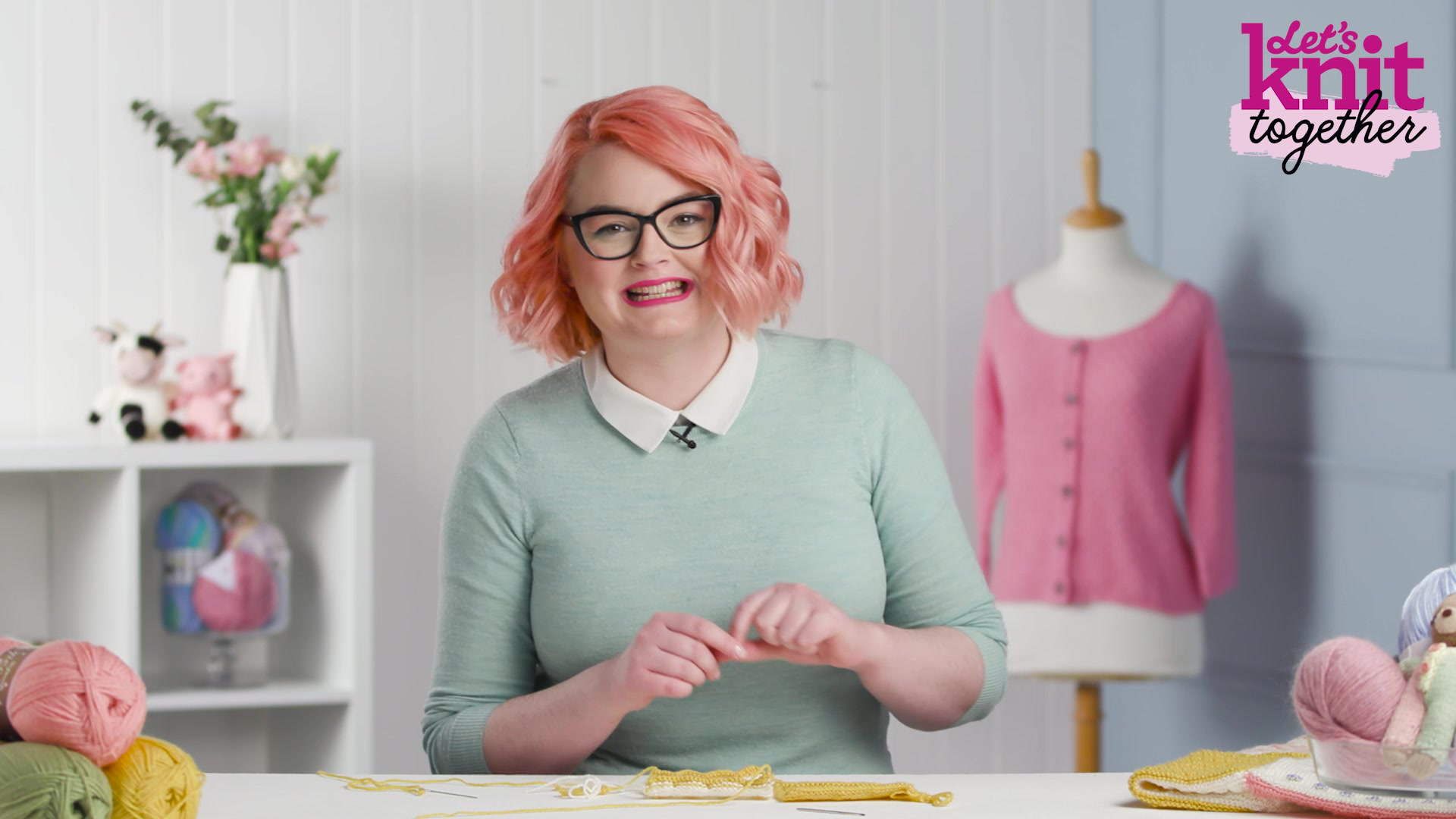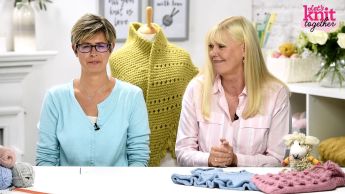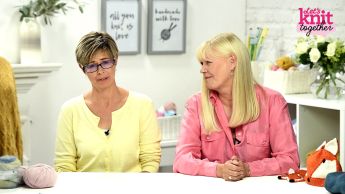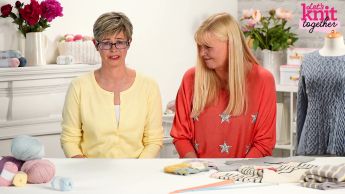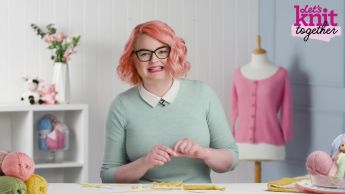How to: create ruching
video by
Let's Knit Together
- Overview
- Practical Guides
This type of decorative gathering can be found on garments and accessories as an eye-catching feature that draws in the knitted fabric either in the middle or along an edge.
While a fixed ruched effect may be knitted as part of the pattern to create a crinkled effect, you can also produce a simple ruched effect after the fabric has been knitted, and as such this version is a sewing technique. It can be really effective if worked with ribbon or a contrast yarn, and some patterns may create eyelets for just this purpose, a simple neckline for a baby or a drawstring bag where a tie or ribbon is used. It works best on thinner fabrics, so we have a DK cotton yarn knitted on 4mm needles. This type of gather is also adjustable, so you can change the length, or even width, of a section fabric to be the right size after knitting. This simple vertical ruch is worked with running stitch between stitches with parallel strands of yarn, so best suited to creating a fixed effect. (Adjustable ruching on garments are made differently with ties running through channels for strength, rather than between stitches.) Running stitch is where the visible and invisible parts are the same length. Longer stitches will produce fewer bigger ruffles and short stitches will make more right gathers close together, so it depends on the desired effect. For best results, ruch a knitted fabric that has been blocked and is flat. Depending on the stitch, the edges of knitting are susceptible to curling under and strips can even roll up completely – blocking helps to reduce this. It is best if the yarn is no thicker than the main fabric yarn, unless it is part of the effect. Look at your knitting to see the easiest holes to find, most likely between columns of stitch if you are working vertically. Cut two lengths of yarn around 5-10cm longer than the section you need to gather. Thread one onto a tapestry needle. To hide the tying up of the ruch strands later, start from the wrong side. Sew a running stitch evenly through the knitted fabric, making sure there is yarn top and bottom. This may be through the row ends or up the main part of the fabric. Avoid splitting the yarn as this creates more friction when it comes to creating the ruch. Add a parallel line of running stitches a short distance away and matching the first one by going in and out of the same rows. If you don't pick up stitches in line with each other, the effect will be less even. Tie the two ends together on the wrong side, and at this stage, use a slip knot that you can easily undo, in case you want to re-sew the lines. Gently move the knitting evenly up along the parallel strands, until the ruched section is the desired length. Tie off the ends at the base to stop the gathers from unravelling, either permanently or temporarily. To cinch the fabric widthways, simply run parallel lines across the fabric, tie off one end, then gather the fabric before securing at both ends.



